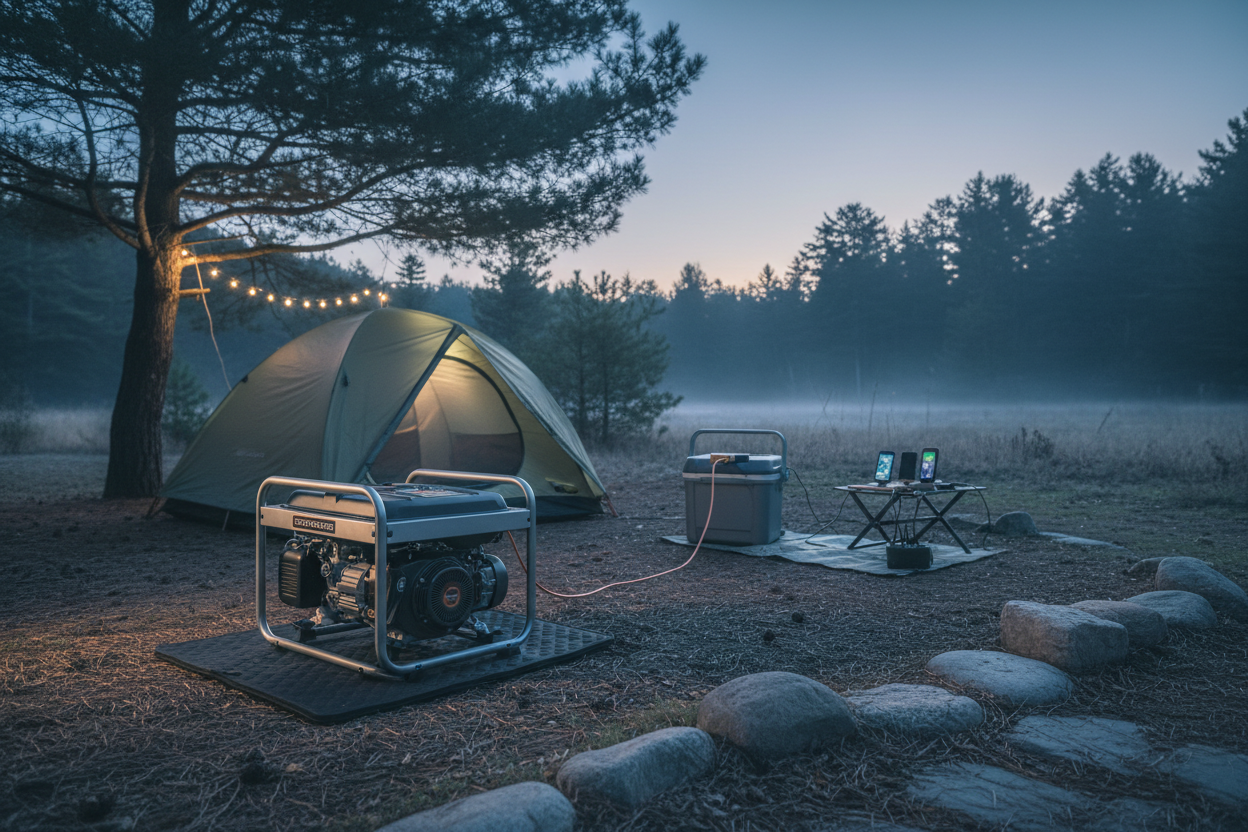What Size Camping Generator Do You Really Need?
Camping trips involve different devices with unique wattage demands. Choosing the right generator size prevents overload and ensures quiet, stable outdoor power.
Understanding running watts and surge watts helps you select a reliable camping generator.

Step 1: Identify Your Camping Loads
Campers typically use a mix of essentials, comfort items, and occasional high-draw tools.
- Essentials: phones, LED lights, headlamps, fans.
- Comfort: electric cooler, coffee maker, projector.
- Occasional: e-bike charger, air pump, small tools.
Each device has a running watt requirement, and some include a higher startup surge.
Step 2: Estimate Running Watts
Running watts represent continuous power draw once a device is active.
Most camping setups require between 300 and 1200 running watts depending on gear.
| Device | Running Watts | Surge Watts |
|---|---|---|
| Phone charger | 5–20W | None |
| LED lights | 10–40W | None |
| 12V cooler | 40–80W | 100–200W |
| Coffee maker | 600–900W | None |
| Projector | 80–200W | None |
| CPAP | 30–90W | None |
| Air pump | 50–120W | 150–250W |
Step 3: Include Surge Requirements
Surge watts represent short bursts required by compressors or motors during startup.
Inverter generators handle surges efficiently, but extra headroom ensures stable operation.
Many campers add twenty to thirty percent additional capacity for comfort.
Three Common Camping Profiles
Light campers usually need 300 to 600 running watts with small surge requirements.
- Typical loads: chargers, LED lights, a fan, and light cooler duty.
- Recommended size: 1000–2000W peak inverter generator.
Weekend campers operate 700 to 1200 running watts across multiple devices.
- Typical loads: cooler, coffee maker, projector, several chargers.
- Recommended size: 2000–3000W peak model with eco mode.
Overlanding groups may reach 1200 to 1800 running watts with higher surge loads.
- Typical loads: larger cooler, cooking appliances, e-bike charging.
- Recommended size: 3000–4500W inverter generator.
Why Peak Watts Matter
Peak watts support startup surges, while rated watts define continuous capacity.
Running loads under seventy percent of rated output preserves quiet operation.
Sizing for CPAP Use
CPAP users need consistent overnight power with minimal noise and clean voltage.
Inverter models protect sensitive equipment and maintain quiet sleep environments.
Learn more in the CPAP camping guide below.
Noise Rules and Distance Planning
Many parks enforce quiet hours and limit generator noise levels during peak times.
Placement distance significantly reduces perceived volume for nearby campers.
Set your generator fifteen to twenty-five feet away on a stable surface.
Weekend Runtime Planning
Runtime depends on load level, fuel type, and eco mode responsiveness.
Lower nighttime loads extend hours and maintain quiet inverter performance.
Common Sizing Mistakes
- Ignoring surge watts for coolers and pumps.
- Running too many appliances simultaneously.
- Choosing loud conventional generators for campgrounds.
Conclusion
Building a wattage plan ensures smooth camping power without overload.
Use realistic load estimates and select a quiet inverter camping generator with balanced capacity.
